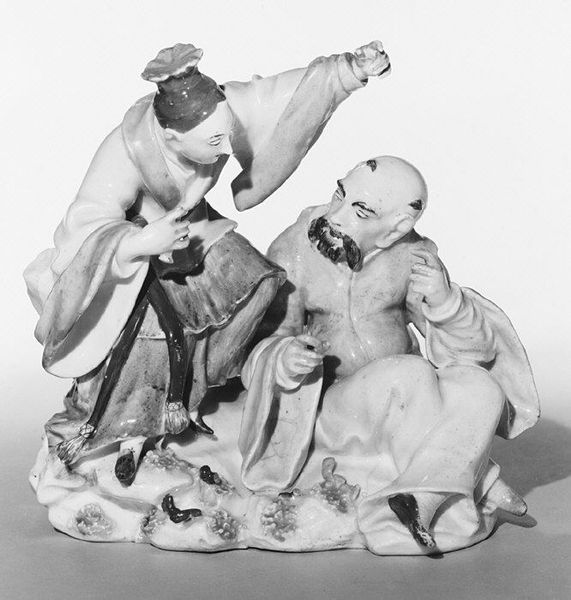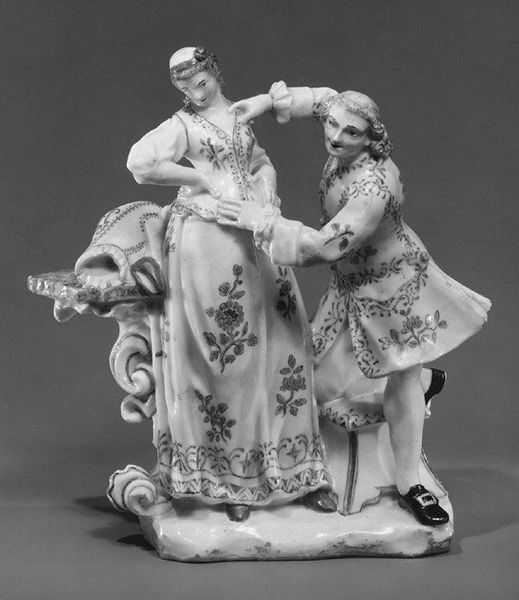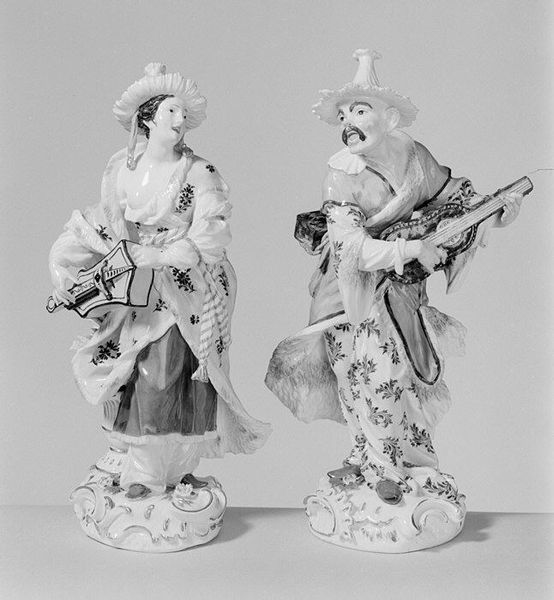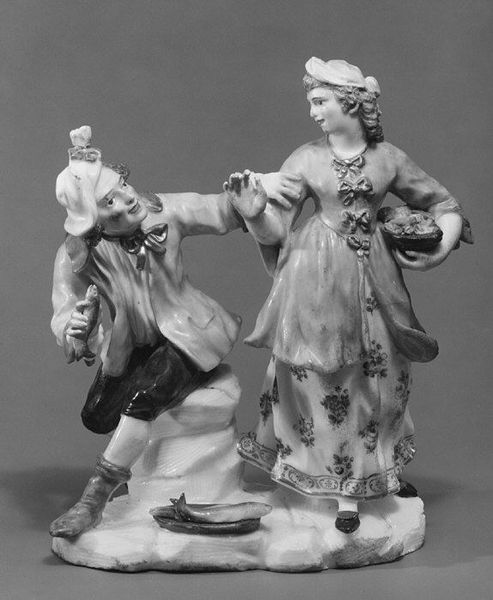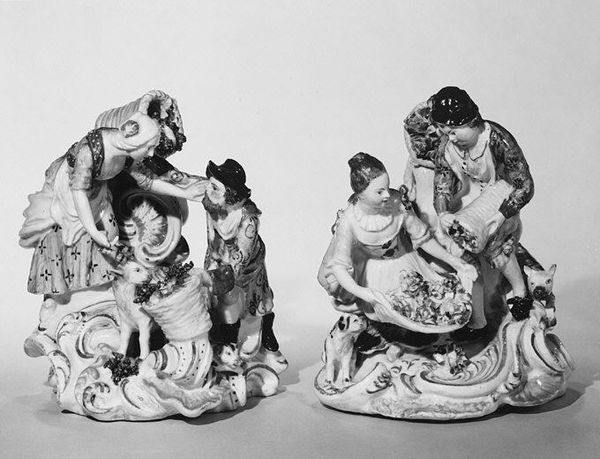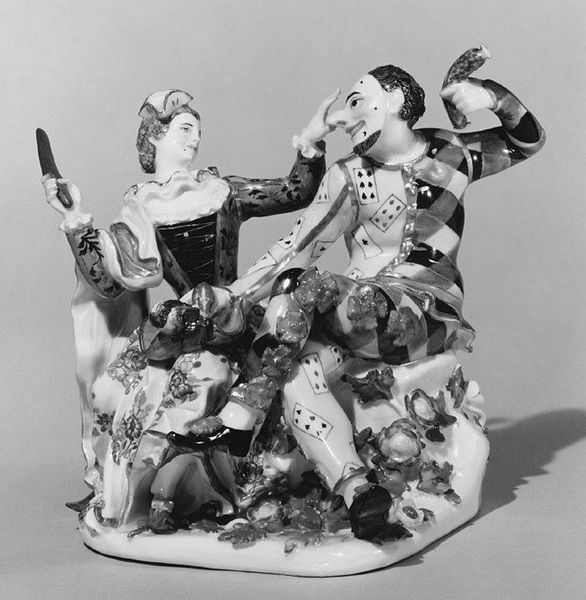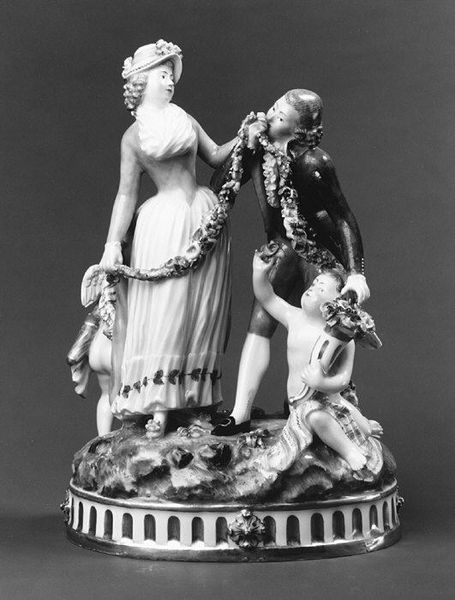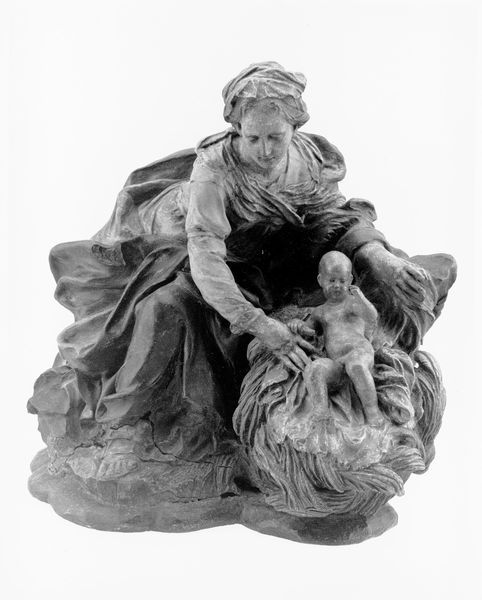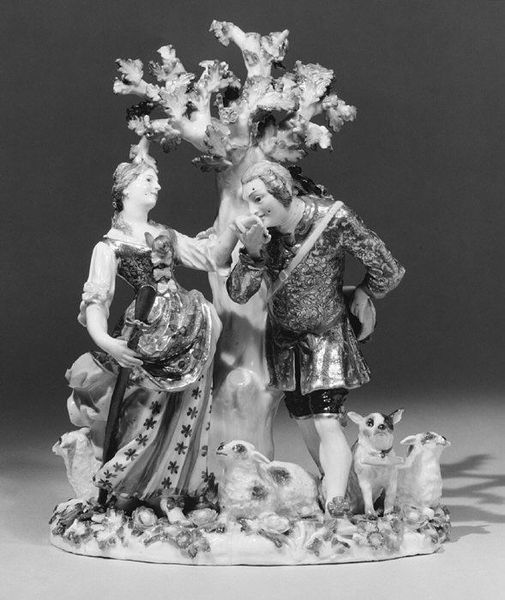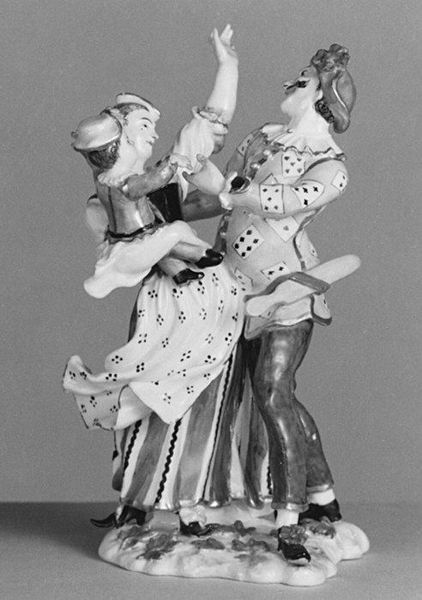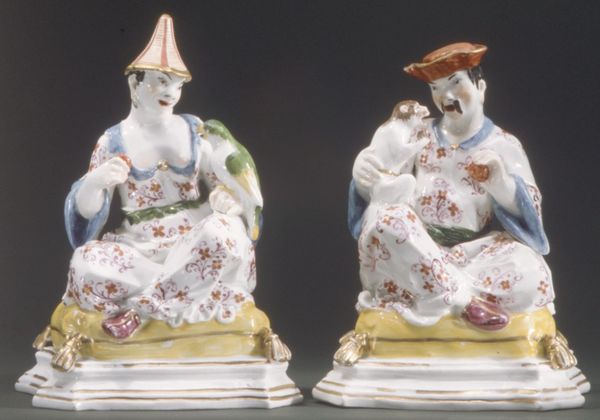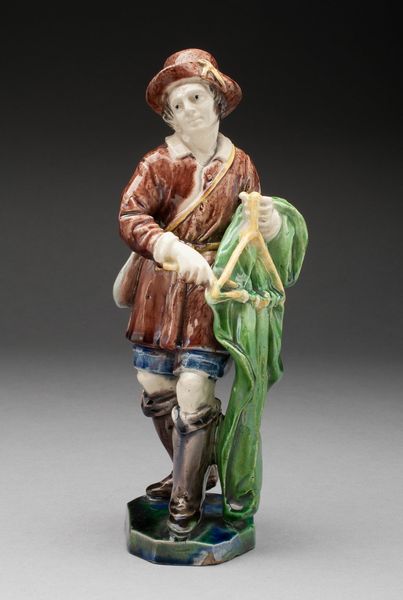
Dimensions: (shepherd .775): 6 7/8 × 4 1/2 in. (17.5 × 11.4 cm); Overall (shepherdess .776): 7 × 3 in. (17.8 × 7.6 cm)
Copyright: Public Domain
These porcelain figures of a shepherd and shepherdess, made in Bristol, England, evoke a certain Arcadian ideal, a longing for a simpler, more innocent existence. Look at them: symbols of pastoral life, the dog and lamb, traditionally represent fidelity and gentleness, virtues much prized during the Enlightenment. The shepherd's offering of a gift echoes gestures seen in classical art, where offerings to gods were commonplace. This motif reappears throughout history; think of Renaissance paintings where the Virgin Mary receives gifts, or even courtship rituals depicted in later genre scenes. The act of giving transcends time. It speaks to fundamental human desires. Consider how the concept of the "noble savage", a figure uncorrupted by civilization, fascinated artists and thinkers alike. These figures capture that fascination, reflecting a yearning for purity and authenticity. Notice how these symbols do not follow a linear progression, but resurface, evolve, and take on new meanings in different historical contexts.
Comments
No comments
Be the first to comment and join the conversation on the ultimate creative platform.
